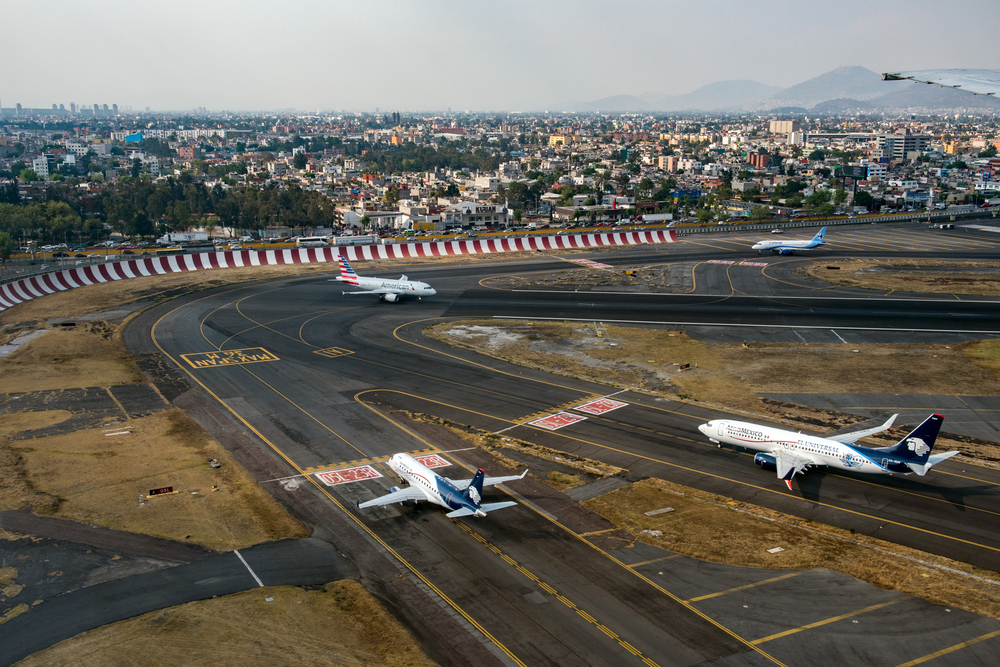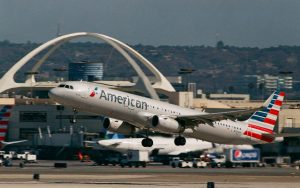The city of Juarez, Mexico, does indeed have an airport. The Abraham González International Airport has IATA designation “CJS” and ICAO designation “MMCS.”
Let’s take a look at this airport to discover how many passengers use it, what its terminals are like, and the locations that can be reached by flying through this airport.
Table of Contents
Abraham González International Airport
About Abraham González International Airport
Abraham Gonzalez International Airport is situated in the Chihuahua State, in Ciudad Juarez, Mexico. It is a hub for international and national flights to and from Ciudad Juarez (commonly referred to as just Juarez).
The airport’s name is for Abraham Gonzalez, the once Governor of Chihuahua.
The airport can accommodate more than 800,000 travelers throughout the year, and passengers will find a currency exchange, lounges with premium amenities, hotel services, parking, and rest areas.
The passenger terminal at Ciudad Juarez International Airport
L1 (the first level)
This level has the arrivals area for gates 3 and 4, customs checks, a luggage claim, ATMs, a shoe-shine station, rental cars, and taxi desks.
L2 (the second level)
Level 2 grants access to waiting areas and the departures area with its security checkpoints. There is also access to boarding gates 1 and 2.
There is a parking lot in the area across from the terminal.
Transportation to and from the airport

Make your reservation with Aeromexico and enjoy a peaceful flight to any destination with top-quality customer service.
It takes around 15 minutes to reach Abraham Gonzalez International Airport from Juarez. It is recommended you that book a limo or taxi service before arrival or take advantage of the shuttle service to take you from hotels to the airport.
Destinations from Abraham González
You may notice that although this airport is called “International,” it doesn’t operate any scheduled international passenger flights. All 13 scheduled destinations are other cities within Mexico.
The destination with the highest traffic is Mexico City (MEX), with about 60 flights departing from the airport each week.
Cancún
Cancun International Airport (Spanish: Aeropuerto Internacional de Cancun) is located in Cancun, Quintana Roo, on Mexico’s Yucatan Peninsula.
It is the third-largest airport in Latin America and Mexico’s second-busiest airport, following Mexico City International Airport.
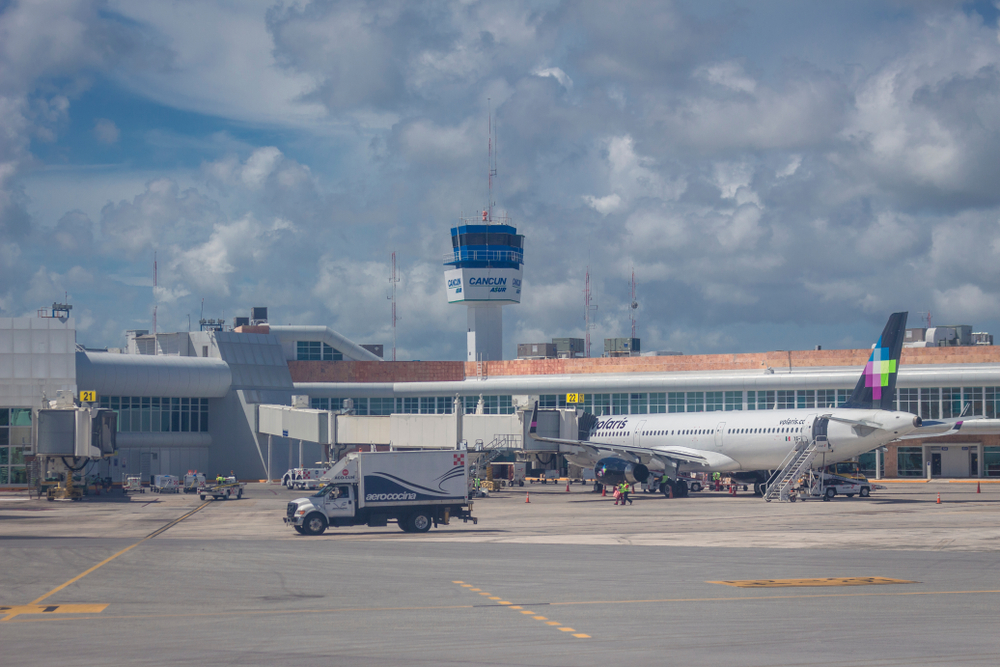
Cancun International Airport currently offers flights to more than 20 destinations within Mexico and 30 countries within North, Central, South America, and Europe.
Durango
General Guadalupe Victoria International Airport (Spanish Aeropuerto International General Guadalupe Victoria), also called Durango International Airport, is located in northeast Durango, Durango, Mexico.
It was named in honor of Guadalupe Victoria, the first president of Mexico.
(Do not confuse this airport with Durango-La Plata County Airport.)
Guadalajara
Guadalajara International Airport is the main airport serving Mexico’s 2nd largest city, Guadalajara.
It opened in 1966. It is situated 16 kilometers to the south of the city’s central area.
It is Mexico’s 2nd busiest airport for cargo flights, 3rd busiest airport, and the 10th largest in Latin America, following Mexico City and Cancun International Airports.
Guadalajara’s International Airport is a major, well-connected airport. It was an important hub for Volaris and serves as the primary transit point to and from the United States.
It also serves as a focal center for Aeromexico and VivaAerobus airlines.
Flights are available to destinations in the United States, Central America, and, of course, Mexico itself. Additionally, cargo flights are available to several destinations in countries within Europe and Asia.
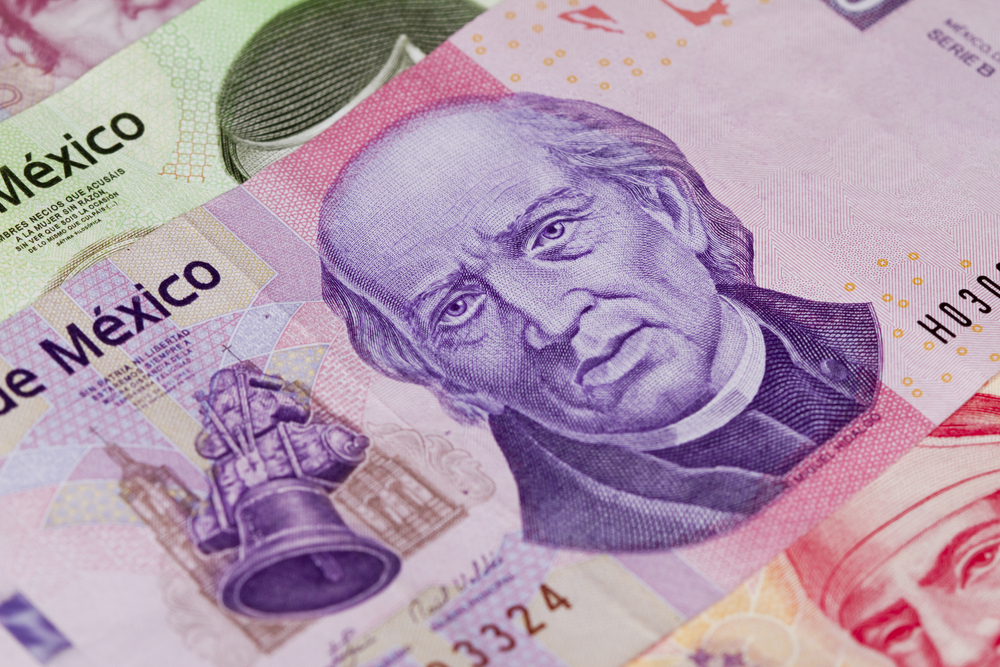
The airport’s name comes from Miguel Hidalgo, who started the war that cast off Spanish dominion over Mexico. He was referred to as the father of Mexican independence.
Hermosillo
Hermosillo International Airport is another international airport reachable via Abraham Gonzalez International Airport. The airport is located in Sonora State, in the city of Hermosillo.
The airport is home to various domestic flights and an international flight to Phoenix, in the United States. The airport currently in operation was established in 1982 to replace the airfield located in La Manga.
The airport typically serves as the primary alternative for flights headed towards Tijuana International Airport. Hermosillo airport also serves as a military base. It is named BAM-18 and handles the Mexican Air Force’s flight operations.
Hermosillo’s name is derived from Ignacio Pesqueira, a general. He assisted the Mexican army in fighting the French in the 18th-century war.
La Paz
Manuel Marquez de Leon International Airport is an international airport. It is situated in Baja California Sur in the city of La Paz.
The city and airport are both near the Gulf of California. La Paz International Airport handles all international and most of the national air traffic in the Baja California Sur area.
Leon/Del Bajío
Bajio International Airport, officially called Aeropuerto Internacional de Guanajuato (Guanajuato International Airport), is also internationally connected and is located within Silao, Guanajuato, Mexico.
It manages international and national air traffic in the region, including in Leon and the state’s capital city, Guanajuato.
Guanajuato International Airport is an important connection point for some flights connecting Mexico City to the United States.
Mazatlán
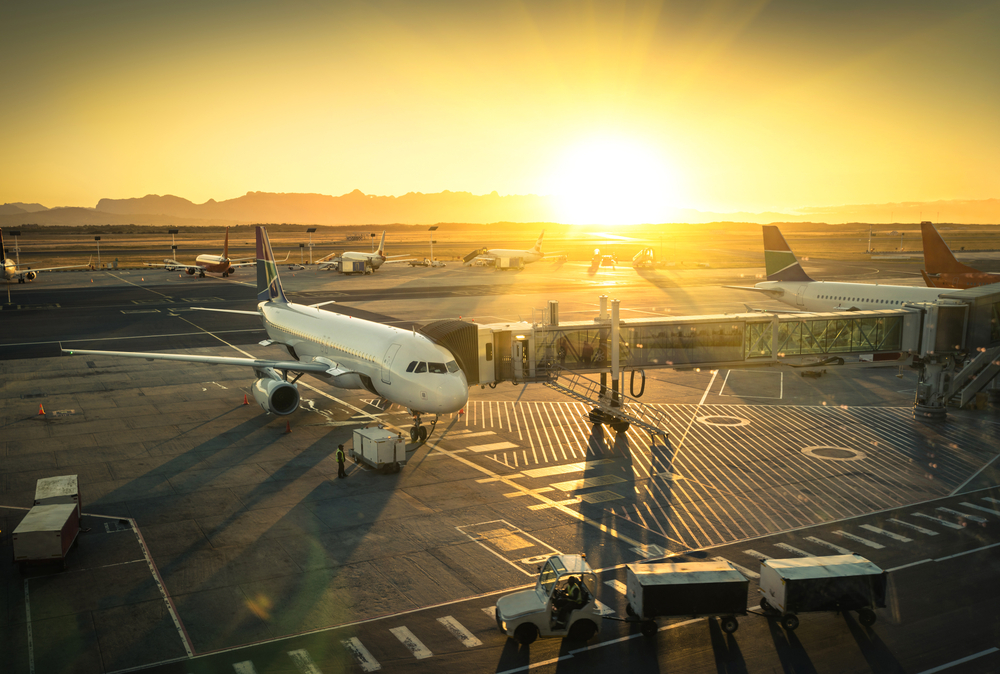
General Rafael Buelna International Airport is also called Mazatlan International Airport and is situated in Sinaloa State, in the city of Mazatlan, Mexico. It is situated at the southernmost point of the city.
General Rafael Buelna International Airport is the largest airport in Sinaloa because of its international operations. In terms of domestic operations, it is just behind Culiacan International Airport.
It has one terminal that has two concourses. Mazatlan Center controls air traffic in the northwest region of the country.
Mexico City
Do not confuse this airport with:
- Felipe Angeles International Airport to be open in 2022 in Santa Lucia, Zumpango, State of Mexico
- Mexico City Texcoco Airport, which was partly built but never completed, and has since been abandoned
- Toluca International Airport, an alternative airport located in the suburbs of Toluca
Mexico City International Airport (formally, the Benito Juarez International Airport) is the airport serving international passengers in the greater Mexico City area.
By plane movements and passengers, it is the largest airport in Latin America, ranking 33rd among the busiest airports in the world.
The airport is serviced by 30 international and domestic passenger airlines and 17 cargo companies. It is the primary hub for Mexico’s biggest air carrier, Aeromexico and Aeromexico Connect.
It also serves as an airport hub for Aeromar and Volaris and is a city of focus for VivaAerobus.
The airport is situated in the neighborhood located in Penon de Los Banos within Venustiano Carranza, one of the 16 boroughs within which Mexico City is divided.
The airport is close to downtown Mexico City and quite handy for travelers headed to that part of the city.
Monterrey
(Do not confuse this airport with Monterey Regional Airport.)
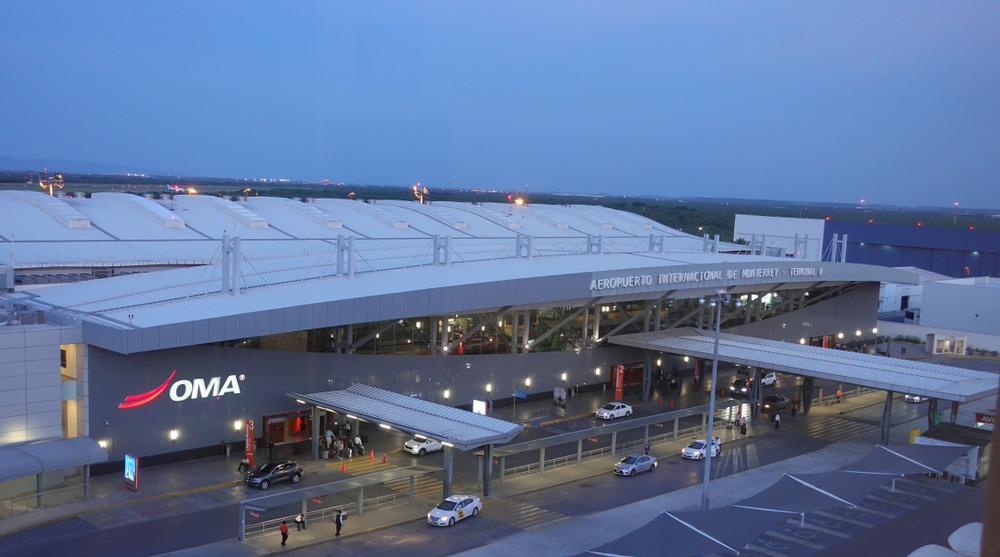
Monterrey International Airport is an international airport situated in Nuevo Leon State, in the city of Apodaca, Mexico.
Along with Del Norte International Airport, the airport manages international and domestic activities for Monterrey and its metropolitan region.
The airport is a hub for three airlines: VivaAerobus, Magnicharters, and Aeromexico.
There are more than 300 daily flights from this airport to over 35 cities across Mexico, the United States, and Latin America.
Monterrey International Airport is Mexico’s fifth and Latin America’s 12th most crowded airport with the highest traffic volume within northern Mexico.
Interestingly, only as recently as September 2005 did Aeromexico complete a flight from Monterrey to Madrid, marking the first non-stop connection between Mexico and Europe.
Monterrey International Airport Terminals
This airport operates four terminals: A, B, C, and the Air Cargo Terminal.
Terminal A is a large complex that houses airlines’ offices, customs, restaurants, shopping areas, baggage claim, and check-in facilities, in addition to numerous other services.
Meanwhile, the satellite building connected by tunnels includes all the waiting lounges and VIP areas and migration services, and of course, the gates for boarding.
Terminal B is the second-most modern airport in the nation (behind only Terminal 2 in Mexico City). Terminal B can accommodate two million passengers annually.
Terminal C houses the operation of a low-cost operator that services airport passengers, VivaAerobus. The terminal is completely separate from Terminals A and B.
Puerto Vallarta
The city of Puerto in Jalisco State, Mexico, is home to Licenciado Gustavo Diaz Ordaz International Airport. The airport was named to honor President Gustavo Diaz Ordaz (1964-70).
It is classified as the 7th busiest airport in Mexico according to passenger movements in the 2010s.
Licenciado Gustavo Diaz Ordaz International Airport is mostly a tourist airport. Most passengers travel through the airport during spring, winter, and early summer months to avoid the region’s rainy season.
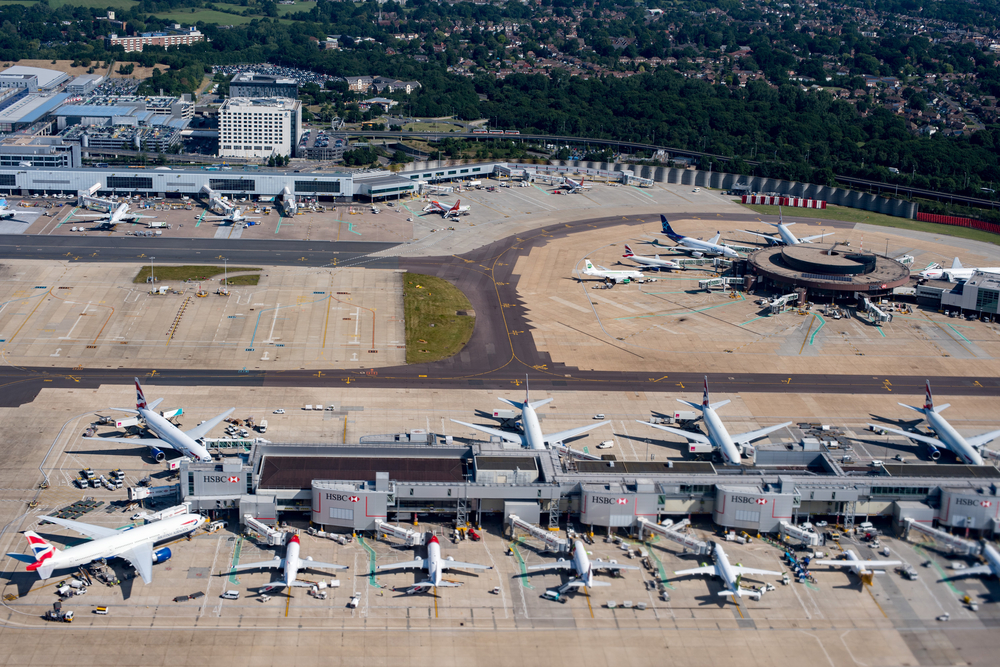
The airport has multiple destinations across North America. The UK airline TUI flies to the airport twice a week from Manchester and London-Gatwick Airport.
Houston, Dallas, and Los Angeles are the most popular international routes connecting to this airport.
Of all the airlines servicing this airport, WestJet provides the most international destinations, connecting 11 Canadian cities to Puerto Vallarta during the high season.
The ground floor is home to the check-in area, international arrivals area, and certain food and beverage areas. The upper level is where there are security checkpoints, the lounge, duty-free stores, and many retail and food options.
It is also where passengers find the departures area.
The terminal building is divided into two floors and divided into two halls, Halls A and B. Hall A is designed for domestic traffic. Hall B is for international traffic.
Querétaro
Queretaro Intercontinental Airport (Spanish: Aeropuerto Intercontinental de Queretaro) is an international airport that is located in the cities of Colon and El Marques, Queretaro, Mexico.
It manages international and national aviation traffic in that same city.
The regional airline TAR has its headquarters in this terminal as well.
Queretaro Intercontinental Airport is among the fastest-growing airports in Mexico.
Transportation to and from the airport
(This information was accurate as of December 2020.)
Taxi: Those who wish to use an Uber or taxi to Queretaro (around $25) or other cities can find one at the airport.
Shuttles: Many passengers book ahead with any of the numerous shuttle services available on Guanajuato and San Miguel de Allende tourist websites. Shuttles cost between $30 to $40 per person.
Rental cars: Budget and Hertz offer rental car services at this airport and have rental counters inside the terminal.
Intercity buses: The most affordable option to travel to other cities would be the Autobus. Taxis that take you from the airport to Queretaro Centro (central bus station) cost around $20.
From Centro, travelers can get a bus to take them to any area of Mexico.
Tijuana
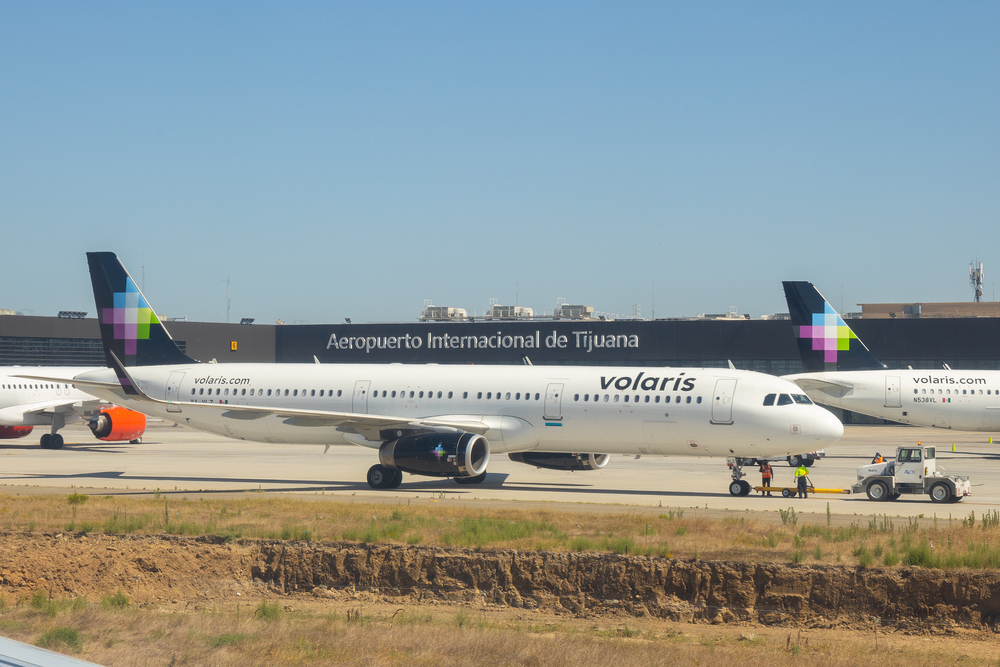
Tijuana International Airport (or General Abelardo L. Rodriguez International Airport) is situated in the state of Baja California Sur, inside the city limits of Tijuana, Mexico.
It is Mexico’s second-northeast airport, following Mexicali International Airport, and lies just south of the U.S. border.
Tijuana International Airport is the 4th busiest in all of Mexico after Guadalajara, Cancun, and Mexico City, and is Latin America’s eleventh most crowded.
The airport can handle more than 10 million people each year and has a daily capacity of 360 flights.
Tijuana Airport’s Cross Border Xpress Bridge and Terminal are accessible from both sides of the border, so U.S. passengers simply walk across an overpass that spans the U.S.-Mexico border.
The airport is a hub for Volaris, the only airline operating on both concourses.
Torreón/Gómez Palacio
Francisco Sarabia International Airport (also known as the Torreon International Airport) is located in Coahuila State, in the city of Torreon, Mexico.
It manages air traffic both nationally and internationally for Comarca Lagunera, including Durango State’s Lerdo and Gomez Palacio.
This airport is named for Francisco Sarabia Tinoco, the pioneer of the commercial airline industry in Mexico.
Airlines operating passenger traffic out of Abraham González International Airport
Aeroméxico
Offers flights to Mexico City.
Aeroméxico Connect
Offers flights to Mexico City.
TAR
Offers flights to Torreón/Gómez Palacio, Querétaro, Mazatlán, La Paz, Hermosillo, Guadalajara, and Durango.
VivaAerobús
Offers flights to Puerto Vallarta, Monterrey, Mexico City, Leon/Del Bajío, Guadalajara, and Cancún.
Volaris
Offers flights to Tijuana, Mexico City, Guadalajara, and Cancún.
Airlines flying cargo out of Abraham González International Airport
TUM AeroCarga
Flies cargo to Monterrey, Toluca.
Estafeta
Flies cargo to La Paz, San Luis Potosí.
About Abraham González International Airport’s home city, Ciudad Juárez

Although not completely abandoned, the town located in Juarez (also known as Ciudad Juarez in Mexico) has been ripped apart by a bloody conflict raging between rival cartels.
Juarez has grown rapidly in the last two decades, but large portions of the city were abandoned because it had become too risky for residents to stay there.
The Mexican government has since cracked down on drug cartels using the military, but issues persist.
Humble beginnings
Garcia de San Francisco, a Franciscan Friar, established Ciudad Juarez in 1659 as The North Pass (El Paso del Norte, in Spanish). He was seeking an alternative route to the Southern Rocky Mountains.
The Franciscans founded the community, which grew in importance because the trade routes between Santa Fe and Chihuahua passed through it.
Spiraling out of control
City officials and the Church erected a cathedral in the 1950s, trying hard to upgrade the city’s appearance. The city’s population soared, reaching nearly half a million by the 1970s.
However, drug cartels founded around the same time began smuggling huge quantities of illegal substances to the U.S. Eventually, the city became recognized as a key hub for drug trafficking.
A dispute over turf between Joaquin “El Chapo” Guzman Loera’s Sinaloa Cartel in the 2000s resulted in a plethora of deaths throughout Chihuahua.
The violence increased to the point where it was completely out of control, and in 2010, Chihuahua had the highest murder rate in the world, with 3,100 deaths in just one year.
Abandonment
Due to the violence, large numbers of people left Ciudad Juarez. Entire neighborhoods were abandoned as people fled in terror.
A large portion of the population, especially middle- and upper-class residents, emigrated, searching for security elsewhere. Businesses and homes were shut down and abandoned.
Resurgence and hope for the future
In the latter part of 2010, the Mexican army began to patrol the city to curb criminality. State, federal, and local government officials joined forces to enhance the quality of life.
By 2015, the rate of homicide was down to a still-horrifying 331 per year. Nevertheless, it was ten times lower than the rate it had been five years previously.
Since 2010, there have been efforts to revamp the city’s image and bring back people.
Previously closed businesses have opened again and a new campaign that aims to bring visitors to the city has begun to attract tourists from all over Mexico, from across the border, and indeed from all over the world.

